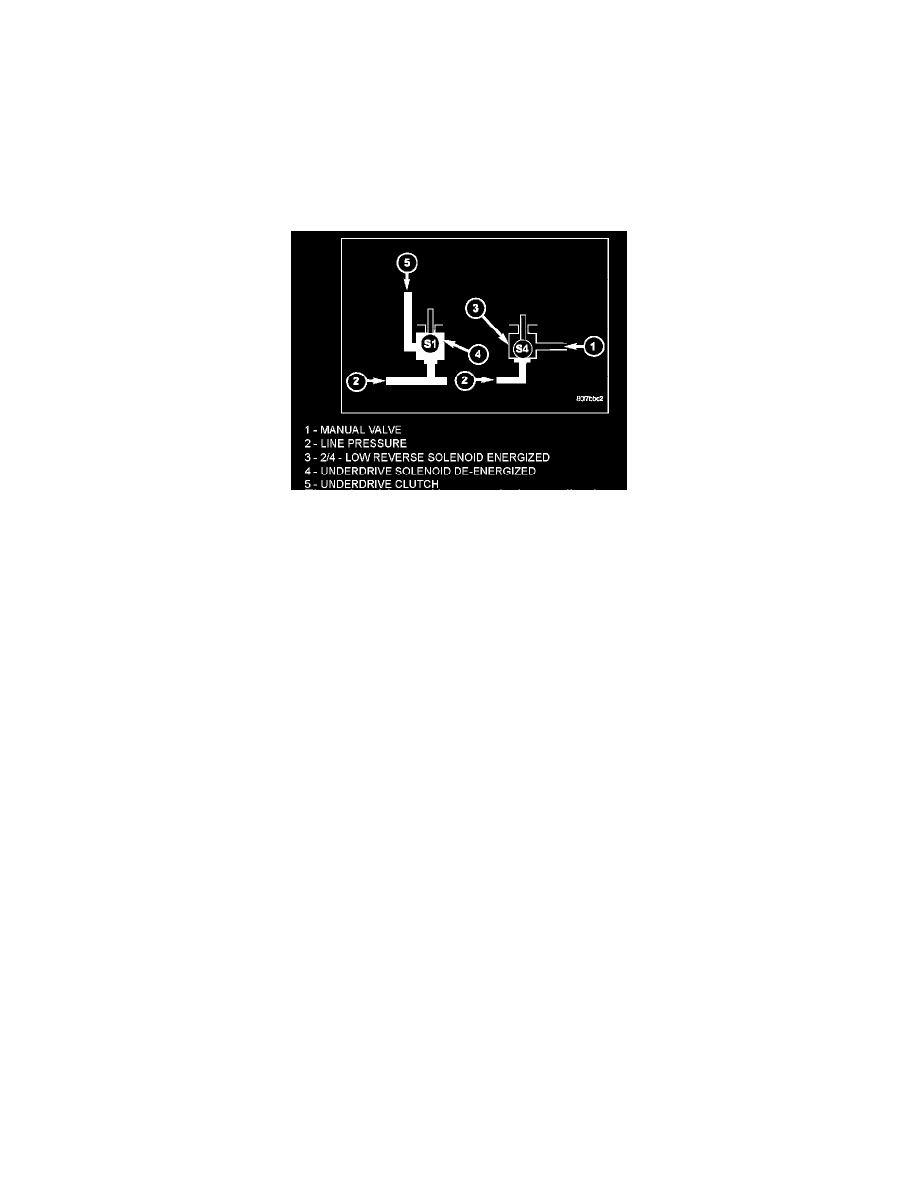Raider V6-3.7L SOHC (2006)

Shift Solenoid: Description and Operation
Automatic Transmission 42RLE
Solenoid
SOLENOID
DESCRIPTION
The typical electrical solenoid used in automotive applications is a linear actuator. It is a device that produces motion in a straight line. This straight
line motion can be either forward or backward in direction, and short or long distance.
A solenoid is an electromechanical device that uses a magnetic force to perform work. It consists of a coil of wire, wrapped around a magnetic core
made from steel or iron, and a spring loaded, movable plunger, which performs the work, or straight line motion.
The solenoids used in transmission applications are attached to valves which can be classified as normally open or normally closed. The normally
open solenoid valve is defined as a valve which allows hydraulic flow when no current or voltage is applied to the solenoid. The normally closed
solenoid valve is defined as a valve which does not allow hydraulic flow when no current or voltage is applied to the solenoid. These valves perform
hydraulic control functions for the transmission and must therefore be durable and tolerant of dirt particles. For these reasons, the valves have
hardened steel poppets and ball valves. The solenoids operate the valves directly, which means that the solenoids must have very high outputs to close
the valves against the sizable flow areas and line pressures found in current transmissions. Fast response time is also necessary to ensure accurate
control of the transmission.
